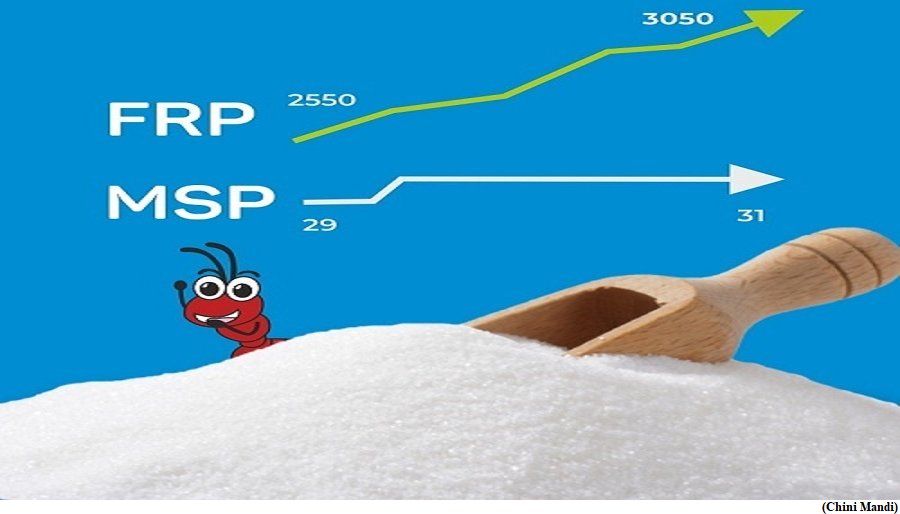An index for monitoring effectiveness of climate smart agriculture practices (GS Paper 3, Environment)

Why in news?
- Researchers from the Indian Institute of Forest Management (IIFM) Bhopal and Solidaridad Network have developed an index for evaluating climate-smart agriculture (CSA) in India.
CSA practices:
- CSA practices aim to have a lower environmental footprint, are more resource efficient and support an increase in income and sustainable farm production.
- These include interventions like improved seeds, integrated nutrient management practices, crop residue management practices, direct seeding of rice, zero tillage farming, mulching, agroforestry.
- Both central and state governments have been promoting, funding and upscaling such projects and pilot studies in several states like Bihar, Haryana, Mizoram, Nagaland, Telangana, Madhya Pradesh and others through the National Adaptation Fund for Climate Change.
- A new research has now found empirical evidence of a strong relationship between farm productivity and CSA.
- The concept of CSA was first introduced by the Food and Agriculture Organization of the United Nations in 2010.
Methodology:
- The methodology involved selecting 34 relevant indicators from the available literature. These indicators were grouped into five dimensions.
- After that, a ranking exercise captured the importance of each of the selected indicators and dimensions on the nine-point ranking scale (1–9), where one is the minimum and nine is the maximum score. Assigned ranks were used to derive the relative weight of indicators and dimensions.
- The five dimensions were governance, farm management practices, environment management, energy management and awareness and training.
- It was found that awareness and training was the highest weighted dimension, which comprises indicators like awareness of climate risks, access to weather and agro-advisory, adoption of information and communication technology tools and training on new farm management practices.
Area of study:
- The study was conducted in Madhya Pradesh, where the state government is piloting a CSA project in sixty villages of three districts: Satna, Sehore and Rajgarh.
- Farmers in these three districts are supported with a number of CSA interventions like introduction of draught-resistant seeds, integrated nutrient management, application of leaf-colour chart, agroforestry, broad bed furrow, zero tillage, crop diversification, direct seeding of rice, training on the good farm practices and crop residue management since 2017-2018.
- For the study, the researchers collected the field data of wheat for Rabi and rice and maize for Kharif cropping seasons in the year 2019-2020 for 315 farmers.
- The average landholding of the sampled farmers was 1.45 hectares (ha) in Satna, 2.77 ha in Sehore and 1.69 ha in Rajgarh districts.
Key Findings:
- Among the dimensions of the awareness and training indicator, timely access to weather and agro-advisory and usage / adoption of ICT-based weather advisory tools ranked the highest with the sampled beneficiaries.
- Although there was no significant difference among different indicators, the high rank of awareness and training suggested that training on smart practices is the most crucial aspect for considering the adoption and implementation of CSA practices.
- The study found that the involvement of farmers in such activities also enhances the ownership and strong commitment to undertake these resilient agriculture practices. Training impacted the farm business, increased awareness of possible innovation and improved decision-making and allocation of resources.
- The study is significant for across regions as the three districts identified for it are located in three different agro-climatic zones.
Way Forward:
- With the global population expected to reach 10 billion by 2050 and with an increase in global warming adversely impacting livelihood, food productivity, agricultural systems, water availability and global economy, the current agricultural practices will need to be transformed by adopting more resource-efficient, sustainable and environment-friendly practices, with lower greenhouse gas emissions to combat climate change.
How Fair and Remunerative Price (FRP) differs from MSP
(GS Paper 3, Economy)
Why in news?
- Recently, the Centre announced a hike in the Fair and Remunerative Price (FRP) of sugarcane to Rs 340 per quintal for Sugar Season 2024-25 (October-September) from the existing Rs 315 per quintal.
- The announcement is significant in particular for Uttar Pradesh and Maharashtra, the two biggest sugarcane-growing states which are also among the states with the maximum number of Lok Sabha seats.
- Meanwhile, the demand for hiking the Minimum Support Price (MSP) has also repeatedly come up amid the ongoing farmers’ protests around the borders of New Delhi.

What is FRP?
- FRP is the price that the Centre’s Cabinet Committee on Economic Affairs (CCEA) decides.
- This committee includes the Prime Minister, the Defence Minister, the Home Minister, the Finance Minister, the Minister of Agriculture and Farmers Welfare and some other senior ministers.
- The sugar mills must legally pay this price to the sugarcane farmers for procurement. There is also a threat of action by cane commissioners, in case of failure to clear FRP dues within 14 days of the cane being sold by farmers.
- Non-clearance can lead to the attachment of mill properties as arrears of land revenue. To avoid the penalty, mills try to accelerate sales. In 2018, this haste had seen sugar prices dropping down against the cost of production.
- Also as part of the process for bringing sugar to the market, the mills pledge their sugar to financial institutions to raise working capital well before the sugar season. The same is recovered by selling sugar through tenders, keeping in view both the cost of production and other margins.
- The FRP is based on the recovery of sugar from the cane. For the sugar season of 2024-25, FRP is Rs 340/quintal at a recovery of 10.25%.
- Sugar recovery is the ratio between sugar produced versus cane crushed, expressed as a percentage. The higher the recovery, the higher the FRP, and the higher the sugar produced from the cane.
How does it differ from the MSP?
- Sugar is one of the 23 crops for which the government provides MSP.
- MSPs serve as a basic, guaranteed payment for farmers given the various vulnerabilities involved in agriculture, such as unfavourable weather conditions. In such scenarios, fluctuations in production could lead to price changes, shortage of food items for consumers and a lack of income for the farmers to support themselves.
- To address this, the government announces the MSP every year for certain crops. It is the price at which the government is supposed to procure/buy that crop from farmers if the market price falls below it.
- MSPs provide a floor for market prices and ensure that farmers receive a certain “minimum” remuneration so that their costs of cultivation (and some profit) can be recovered.
CACP:
- The price is fixed based on the recommendations of the Commission for Agricultural Costs and Prices (CACP).
- It comprises a Chairman, a Member Secretary, one Member (Official) and two Members (Non-Official).
While recommending the MSP, the following factors are considered:
- the demand and supply of a commodity;
- its cost of production;
- the market price trends (both domestic and international);
- inter-crop price parity;
- the terms of trade between agriculture and non-agriculture (that is, the ratio of prices of farm inputs and farm outputs);
- a minimum of 50 per cent as the margin over the cost of production; and
- the likely implications of an MSP on consumers of that product.
Why does sugarcane have both the FRP and MSP?
- In 2020, NITI Aayog released the final report of its task force on the Sugar and Sugarcane industry.
- It said, “Since sugarcane has a very short shelf life, the responsibility of procurement of cane is on the sugar mills that are mandatorily expected to pay the FRP on purchase upfront. Additionally, other crops that are under the MSP can be sold at prices higher than the MSP itself. However, with regard to sugarcane, the absence of shelf life prompts them to sell their produce at any price prevailing in the cane-crushing season irrespective of demand and supply forces”.
- The central government had introduced MSP for sugar in 2018. It was fixed at Rs 2,850 per quintal which was subsequently raised to Rs 3,100 per quintal. This was part of the measures announced to arrest the constant slide of sugar and to keep the demand and supply ratio to a safe limit.
- The Centre had also fixed mill-wise sales quota. Mills which breached either of the conditions were liable for action under the Essential Commodities Act, 1955 which would include a fine as well as a jail term (ranging from 3 months to 7 years) or both.
- It was reasoned that these measures would help mills generate enough revenue to pay their farmers the FRP.



